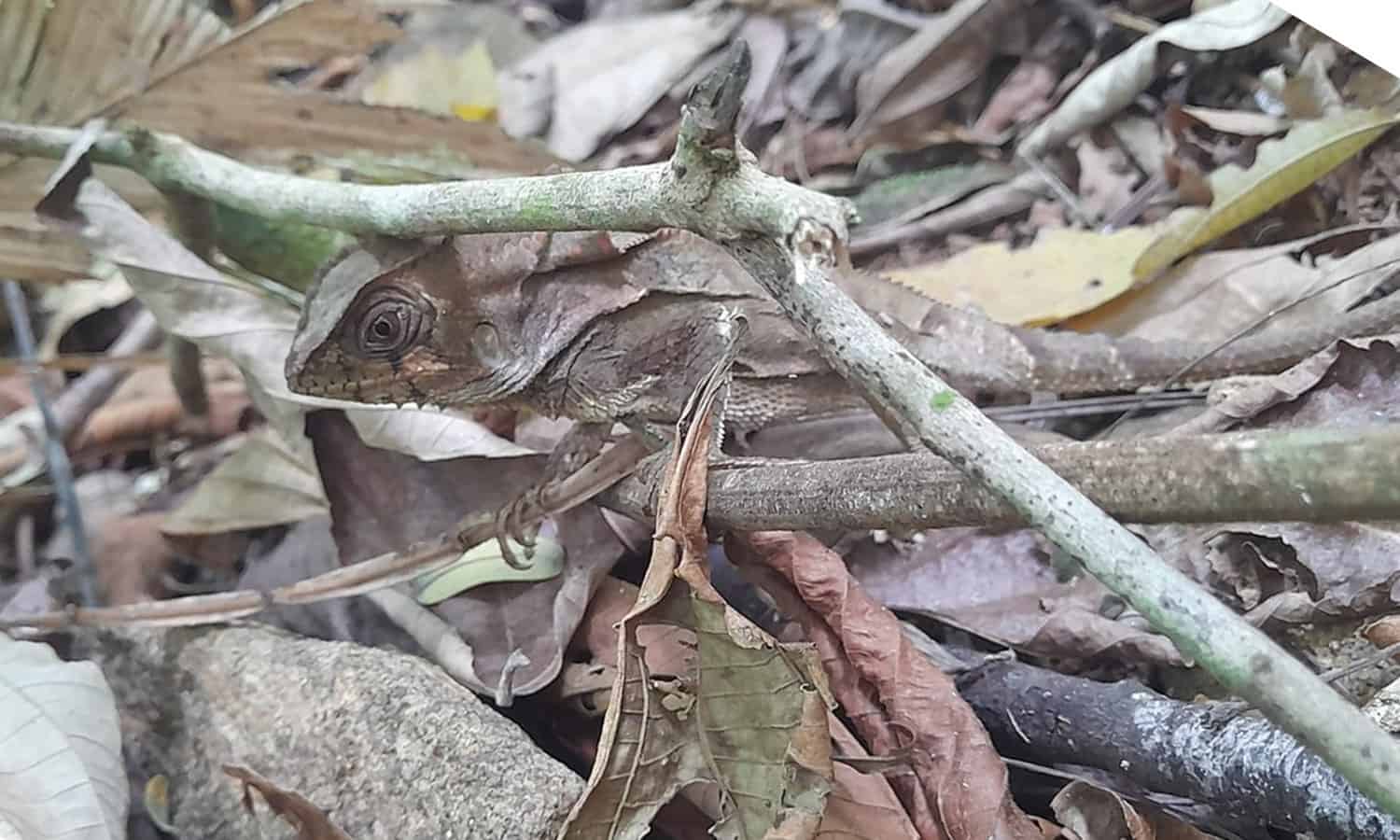Years ago, while doing research on the green iguana and black spiny-tailed iguana, I came across another species of iguana that calls Costa Rica home, the helmeted iguana. The information I found said that they were difficult to spot in the wild, and their range didn’t include Guanacaste (where I do most of my iguana spotting), so I didn’t look into it too closely. Well, as luck would have it, I almost stepped on one the other day, so it’s time to meet the helmeted iguana.
The helmeted iguana (Corytophanes cristatus) has the common name perro zompopo in Spanish, which is an excellent name just based on how fun it is to say. The English name is an issue because helmeted iguanas do not belong to the iguana family, Iguanidae. They’re actually one of Costa Rica’s four members of the Corytophanidae family which is more commonly known as the casque-headed lizards. This makes a ton of sense when you see a helmeted iguana, they look extremely similar to basilisks, who are the other three members of the Tico Corytophanida family.
The defining characteristic of the casque-headed group of lizards is the boney casque, or sail-like crest, on their heads. The helmeted iguana’s crest starts as two boney ridges above the eyes, that meet behind the head and extend backward like a sail. The area between the eye-ridges, on top of the head, is concave and thought to be used as a shovel to make an indentation to lay eggs.
If you cut Costa Rica into thirds from northwest to southeast, the helmeted iguana lives in the top third and bottom third and is absent from Guanacaste and the high elevations in the central part of the country. They live in humid rainforest where they can be found on the forest floor and in the trees.
Helmeted iguanas are notoriously difficult to see in the wild for two reasons, how they look and what they do. Like many species, these lizards are camouflaged but they are able to take this characteristic to an extreme. They are able to rapidly change color to blend in to their surroundings, a fact reported to me by a friend while reviewing camera traps.
When she told me they could change color, I thought ‘That doesn’t sound right. I’ve never heard of a lizard in Costa Rica that can change color. Better not say anything though, you could be wrong.’ Good thing I didn’t say anything because I was wrong. Their behavior also makes them difficult to detect because they are extreme ‘sit and wait predators’, which means they do a lot of sitting around without moving an inch. Their plan is to let big juicy insects walk right up to them to be eaten.
I have never recorded a helmeted iguana with my camera traps, and I probably never will. Their small size and the fact that they infrequently move means my motion sensors stand little chance of being activated. I did see one in person the other day for the first time while reviewing cameras at Finca Bella Vida.
It was sitting and waiting for bugs next to one of my cameras, and it scooted out of the way before I stepped on it. If it hadn’t moved, I never would have seen it. The first thing I thought when I saw was, ‘Ooh! A helmeted iguana!’ The second thing I thought was, ‘Now I can write an article about them in The Tico Times!
About the Author
Vincent Losasso, founder of Guanacaste Wildlife Monitoring, is a biologist who works with camera traps throughout Costa Rica. Learn more about his projects on facebook or instagram. You can also email him at: vincent@guanacastewildlifemonitoring.com

